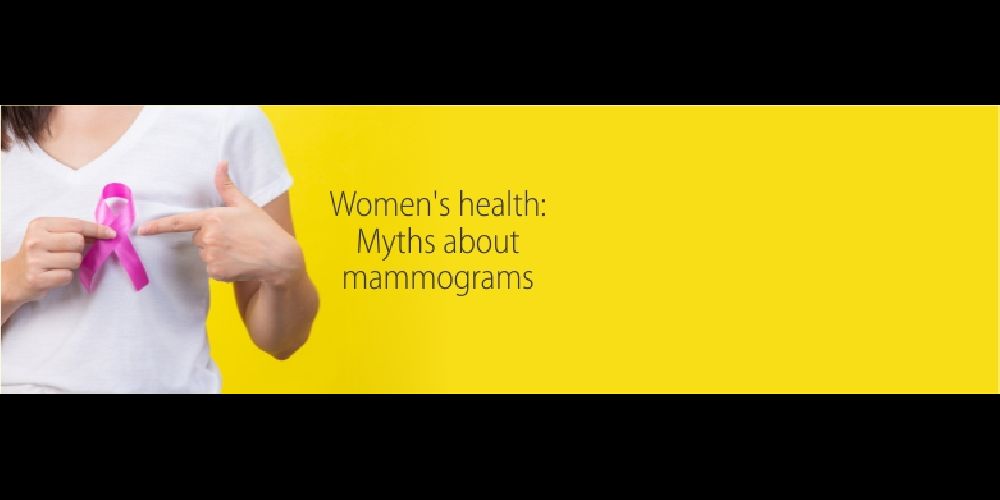Women's health: Myths about mammograms.
-
February 28, 2022
-
550 Views
Women are known to balance multiple roles at home and at work. Women frequently work long hours to strike the balance between the roles. But, amid all of this juggling, they frequently overlook one of the most important aspects - their health. With International Women's Day just around the corner, we'll be running a blog series all about her health. Today, let's debunk common myths about mammograms.
What are mammograms and its types?
Mammograms can be used to screen for breast cancer in women. It can often detect or find breast cancer early when it is small. This is the time when it is likely to be treated.
There are two common types of mammograms:
1. Diagnostic Mammogram
Mammograms are also performed on women who have breast-related signs or symptoms (symptomatic). Diagnostic mammograms are distinct from screening mammograms in that they focus on a potential abnormality or symptom.
2. Digital Mammogram
Digital mammograms are newer technology films that generate images using a computer. The equipment is similar to a digital camera and can see things more clearly, particularly in the case of dense breasts. Digital mammograms are typically recommended for women under the age of 50 who have dense breast tissue. The films are irreplaceable. The amount of compression (squeezing) and radiation, on the other hand, is the same as with analogue films.
Myths & Facts:
Mammograms do not prevent breast cancer, but they can help save lives by detecting it early. Here are some common myths and facts.
Myth 1
I don't have any symptoms or family history, so I don't need an annual mammogram.
Fact
More than 75% of breast cancer patients have no family history. Early-stage breast cancer has a five-year survival rate of 95%, according to the American Cancer Society. The survival rate for late-stage cancer is 27%.
Myth 2
A traditional mammogram is the same as a 3-D mammogram.
Fact
A 3-D mammogram, as opposed to a standard 2-D mammogram, provides greater clarity and the ability to distinguish between overlapping normal tissue and cancer. Data from 3-D mammography show a 40% increase in detecting early cancer and a 40% decrease in false alarms or unnecessary recalls from screening.
Myth 3
A screening mammogram will detect any type of cancer in breast tissue.
Fact
Annual mammograms are extremely important for women, but there are some limitations. This is primarily due to dense breast tissue, the denser the breast tissue, the more likely cancer will be hidden by it. For women with dense breast tissue, other imaging methods, such as breast ultrasound and a breast MRI, can be used in addition to an annual mammogram.
Myth 4
I can't schedule an exam because my doctor didn't tell me I needed one.
Fact:
A screening mammogram does not require your doctor's prescription. If you're a woman over the age of 40, you should have a mammogram every year. For earlier detection of breast cancer, women can self-request an appointment for their annual mammogram.
Myth 5
A mammogram will expose me to dangerously high levels of radiation.
Fact
A mammogram does use radiation, but it is very small and within medical guidelines. The radiation does not affect everyone in the same way. According to the National Institutes of Health, the risk is higher for women under the age of 40, but it is safe.





